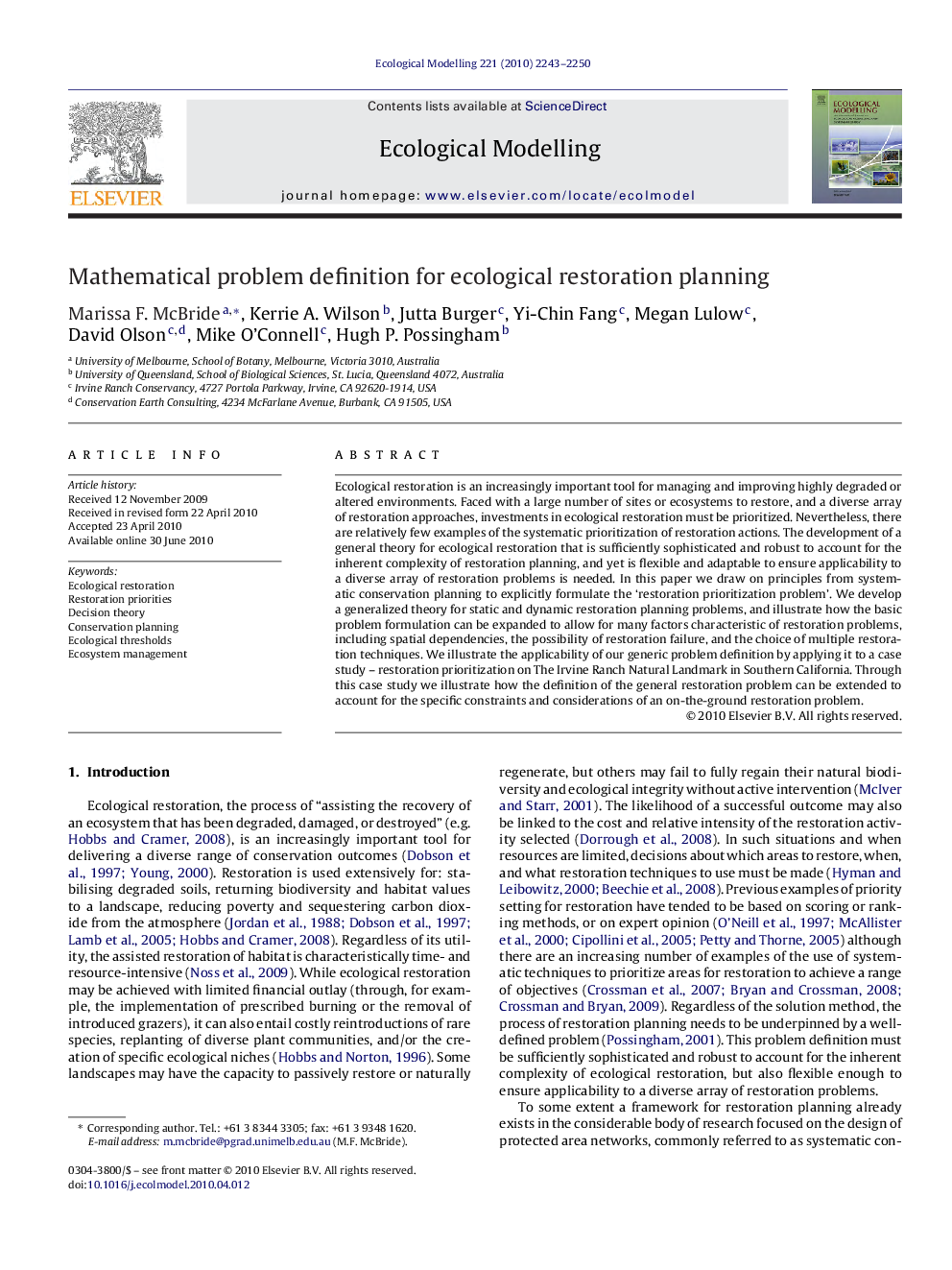| Article ID | Journal | Published Year | Pages | File Type |
|---|---|---|---|---|
| 4377214 | Ecological Modelling | 2010 | 8 Pages |
Ecological restoration is an increasingly important tool for managing and improving highly degraded or altered environments. Faced with a large number of sites or ecosystems to restore, and a diverse array of restoration approaches, investments in ecological restoration must be prioritized. Nevertheless, there are relatively few examples of the systematic prioritization of restoration actions. The development of a general theory for ecological restoration that is sufficiently sophisticated and robust to account for the inherent complexity of restoration planning, and yet is flexible and adaptable to ensure applicability to a diverse array of restoration problems is needed. In this paper we draw on principles from systematic conservation planning to explicitly formulate the ‘restoration prioritization problem’. We develop a generalized theory for static and dynamic restoration planning problems, and illustrate how the basic problem formulation can be expanded to allow for many factors characteristic of restoration problems, including spatial dependencies, the possibility of restoration failure, and the choice of multiple restoration techniques. We illustrate the applicability of our generic problem definition by applying it to a case study – restoration prioritization on The Irvine Ranch Natural Landmark in Southern California. Through this case study we illustrate how the definition of the general restoration problem can be extended to account for the specific constraints and considerations of an on-the-ground restoration problem.
